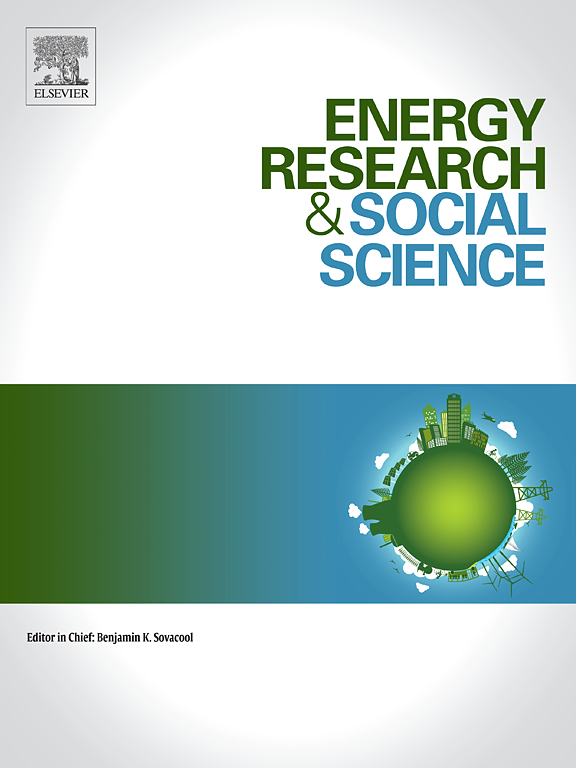清洁能源金融必须紧急应对新技术的可融资性差距、新兴经济体的系统性风险以及基础设施支出的历史性转变
IF 7.4
2区 经济学
Q1 ENVIRONMENTAL STUDIES
引用次数: 0
摘要
到本世纪中叶,全球经济脱碳需要在未来几十年里,每年对清洁能源的投资增加一倍以上。尽管全球资本存量足够大,但大多数投资都流向风险和回报情况不同于新的清洁基础设施的机会。投资者很少将资金投入新兴的清洁技术,除非这些技术被证明具有大规模的商业可行性,从而造成持续的融资缺口。这一差距在基础设施需求最大、未来排放增长可能最高的低收入国家最为明显。许多被广泛讨论的融资解决方案都没有经过可行性或规模能力的测试,而且人们对将如此巨额资金转移到能源部门的宏观经济影响知之甚少。本文确定了以雄心勃勃的气候目标所隐含的速度和规模动员资本的三个系统性挑战:(1)使新技术具有可投资性;(2)在低收入经济体扩大清洁能源的可负担融资;(3)管理基础设施支出向能源重新分配的历史性宏观经济后果。它为评估这些挑战、解释当前解决方案不足的原因以及制定应对这些挑战的研究和政策议程提供了一个关键框架,从而推动了清洁能源金融领域的发展。本文章由计算机程序翻译,如有差异,请以英文原文为准。
Clean energy finance must urgently confront novel technology bankability gaps, systemic risks in emerging economies, and a historic shift in infrastructure spending
Decarbonizing the global economy by midcentury will require annual investment in clean energy to more than double for several decades. Although global capital stocks are large enough, most investment flows to opportunities with risk and return profiles that differ from those of new clean infrastructure. Investors rarely commit funds to emerging clean technologies until these are proven commercially viable at scale, creating a persistent financing gap. This gap is widest in lower-income countries, where infrastructure needs are greatest and future emissions growth is likely to be highest. Many widely discussed financing solutions have not been tested for feasibility or for their ability to scale, and the macroeconomic impacts of shifting such vast sums into the energy sector are poorly understood. This article identifies three systemic challenges to mobilizing capital at the pace and scale implied by ambitious climate goals: (1) making novel technologies investable, (2) expanding affordable finance for clean energy in lower-income economies, and (3) managing the macroeconomic consequences of a historic reallocation of infrastructure spending toward energy. It advances the clean energy finance field by providing a critical framework for assessing these challenges, explaining why current solutions fall short, and setting a research and policy agenda to address them.
求助全文
通过发布文献求助,成功后即可免费获取论文全文。
去求助
来源期刊

Energy Research & Social Science
ENVIRONMENTAL STUDIES-
CiteScore
14.00
自引率
16.40%
发文量
441
审稿时长
55 days
期刊介绍:
Energy Research & Social Science (ERSS) is a peer-reviewed international journal that publishes original research and review articles examining the relationship between energy systems and society. ERSS covers a range of topics revolving around the intersection of energy technologies, fuels, and resources on one side and social processes and influences - including communities of energy users, people affected by energy production, social institutions, customs, traditions, behaviors, and policies - on the other. Put another way, ERSS investigates the social system surrounding energy technology and hardware. ERSS is relevant for energy practitioners, researchers interested in the social aspects of energy production or use, and policymakers.
Energy Research & Social Science (ERSS) provides an interdisciplinary forum to discuss how social and technical issues related to energy production and consumption interact. Energy production, distribution, and consumption all have both technical and human components, and the latter involves the human causes and consequences of energy-related activities and processes as well as social structures that shape how people interact with energy systems. Energy analysis, therefore, needs to look beyond the dimensions of technology and economics to include these social and human elements.
 求助内容:
求助内容: 应助结果提醒方式:
应助结果提醒方式:


